Pyroclastic density currents (PDCs) are perhaps the most hazardous events to local areas during explosive volcanic eruptions. These hot, ground-hugging flows of ash and debris can travel at speeds of hundreds of metres per second, reaching many tens to hundreds of kilometres from the source. The currents are inherently unpredictable and, as they propagate, they can morph in type between dense, clast-rich flows and dilute ash- and gas-rich surges, capable of detaching from the main body of the flow and surmounting topography.
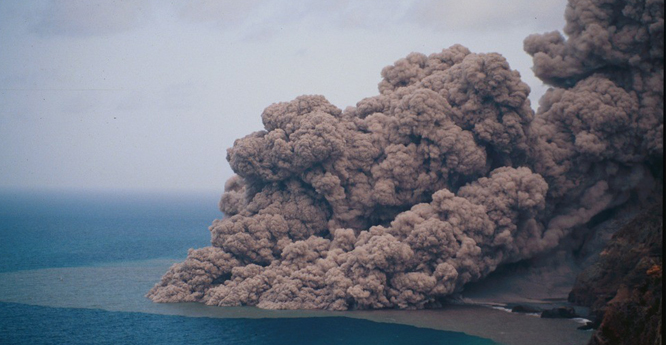
Pyroclastic density current entering sea, Montserrat. BGS ©UKRI. All rights reserved.
This range in behaviour in both time and location during a flow event makes forecasting associated hazards incredibly difficult. Hazard estimates are typically produced through application of numerical models, yet these models commonly assume one mode of continuous activity, overlooking the multiphase dynamics of the current.
Rheology and hazard assessment
The movement of PDCs is also controlled by their rheology, i.e. the way the flow deforms and moves in response to applied stress. This deformation depends on the physical properties of the flow (e.g. particle volumetric concentration), which can be very diverse among PDCs and even inside a single PDC. In fact, PDCs can be vertically stratified, with a dense basal part and a top dilute portion.
For these reasons, the rheology of PDCs and their interaction with topography are matters of extensive investigation in the volcanological community, not only for the fundamental scientific challenge but also for the hazard quantification implications. Increasingly, hazard maps of PDCs are used to show the probability of an area being inundated by a PDC and, where possible, the most likely impact. These are obtained by applying models of various degrees of complexity that account for the most realistic physics of the simulated processes.
Investigating PDC dynamics
Our researchers are investigating the dynamics of PDCs in a NERC standard grant project. The project is a collaboration between the BGS, Edinburgh University, Heriot-Watt University, INGV (Italy) and the University of Buffalo (USA). The research brings together geological information from the published record and novel geomorphological, experimental and numerical techniques in order to improve our understanding of current dynamics and parameterise key physical flow processes to enable development of new techniques for estimating the hazard associated with these potentially devastating events.
Information from the published literature
Numerous publications describe the characteristics of PDC deposits, e.g. their distribution, thickness, grain size and componentry. This information is often used to inform understanding of current behaviour and investigate the conditions, e.g. topography, that have affected its runout. Through collation of this data into a single dataset that describes the characteristics of numerous flows from different locations, we hope to identify common features and trends across deposits. Results will inform experimental and numerical modelling of currents.
PDC rheology experiments
In this task, we are investigating the physical properties of volcanic granular materials (sampled from real PDC deposits) with the aim of understanding how the investigated material responds to an applied stress and interacts with a rough wall. This activity is carried out in collaboration with Heriot-Watt University using a Freeman FT4 Powder Rheometer.
First results show that the behaviour of the PDC granular matter strongly depends on its physical properties, particularly on the grain-size distribution.
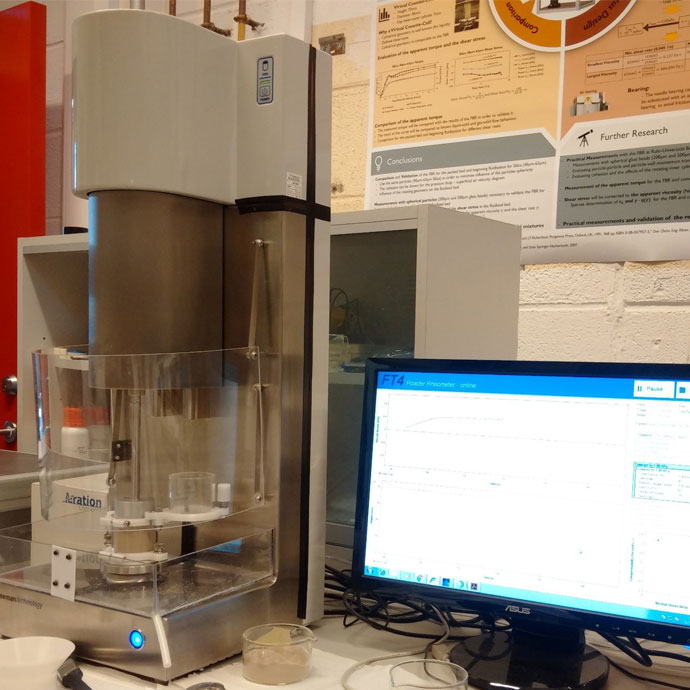
The Freeman FT4 Powder Rheometer installed at Heriot-Watt University. BGS © UKRI.
Laboratory experiments of the rheology and transportation-deposition mechanisms of granular flows
We are building a 3 m-long, 30 cm-wide variable slope chute with transparent walls in order to investigate the transport-deposition mechanisms of granular flows. Particular emphasis will be dedicated to understanding:
- the segregation mechanisms inside the flow (by particle size and/or density) and in response to irregularities of the substrate, which will be implemented in the current setup (i.e. bumps and obstacles)
- the transition from a dense, viscous layer to a top, more dilute, saltating layer
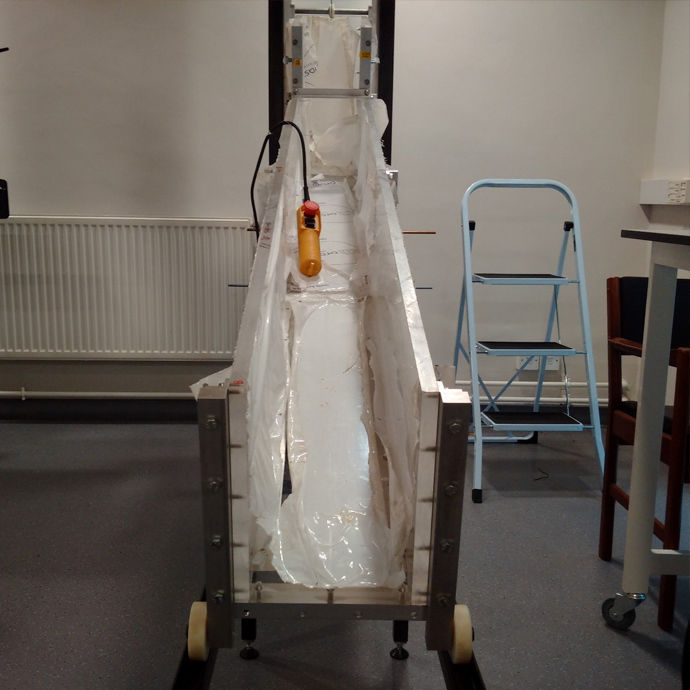
The chute now installed at University of Edinburgh. BGS © UKRI.
The chute will be complemented with cameras, including a high-speed, high-resolution camera that will allow tracking the particle movement with high spatial-temporal resolution.
Contact
If you want to discover more then please contact Fabio Dioguardi (experimental modelling) or Samantha Engwell (data collection).
You may also be interested in
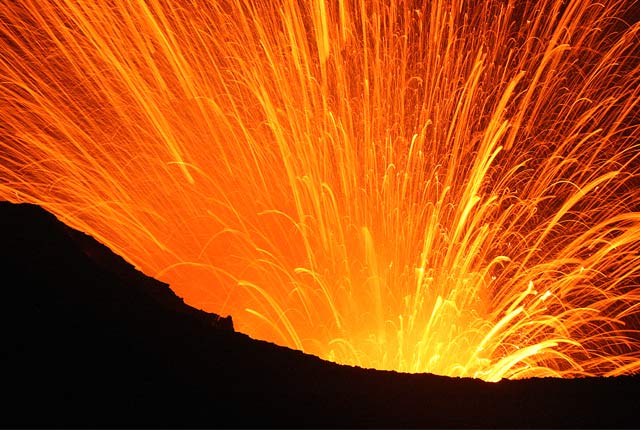
Volcanology
Our scientists lead research projects and work in partnerships around the world to improve our understanding of volcanic processes, hazards and risks.
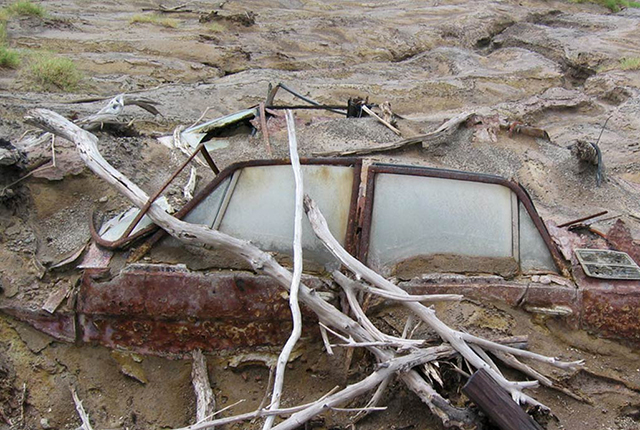
Volcanic debris flows
Debris flows, also known as lahars when they involve volcanic material, are mixtures of sediments and water that flow down the slopes in response to gravity.



